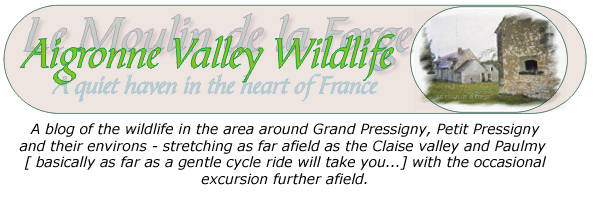I found the second feather in the front garden a couple of days later, after another operatic exchange in the hangar. It is more obviously damaged than the first, having lost the tip.
Both feathers are coverts, which spring from the bird's "upper arm", as it were, and cover the bases of the main flight feathers. The first is a greater covert, and the second is I think a lesser covert, from close to the bird's body.
 |
| From www.rspb.co.uk, diagram by Peter Grant |
What gives them away as owl feathers is their velvety surface, which gives them a slightly out of focus look, and the fine fringes on the edges of the feather.
The part played by these features in flight is to break up the turbulence of the air passing over the bird's wing into smaller vortices, and smooth it out, thus reducing the noise made by the bird passing through the air. The smoothed air flows silently - thus the owl is silent in flight and attacks without the noise of its approach alerting its prey. You can read more about this here.
With thanks to Tim Dixon, tutor, Birdwatching, York Educational Settlement, early 1980s.















1 comment:
Beautiful photos and beautiful
subjects. Particularly like the
last photo. It is the subtlety
of the colors, the gray speckles
on the fringe. Would make a wonderful fabric print.
Post a Comment